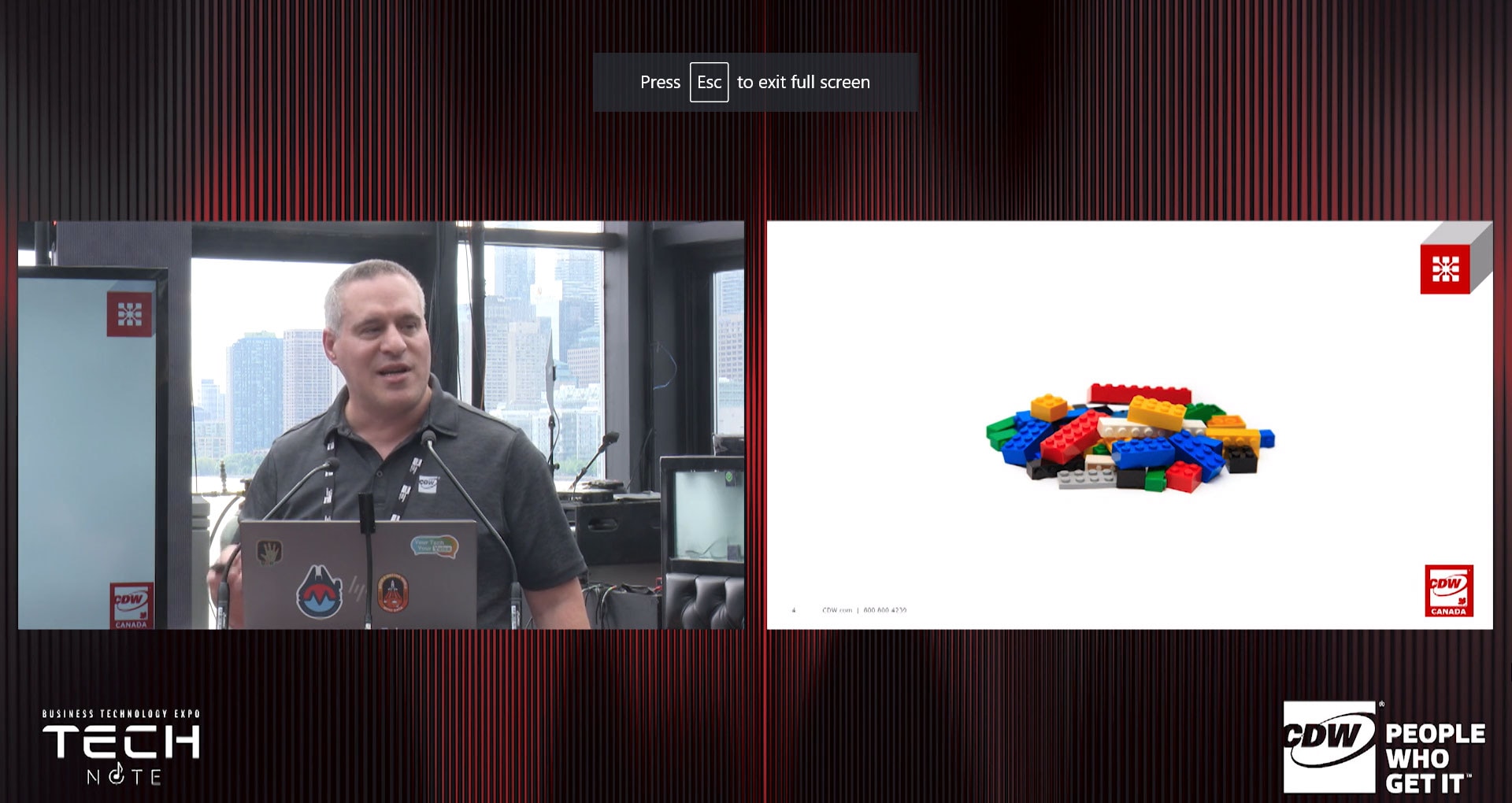July 05, 2022
Kinetic Infrastructure: The New Building Block of Your Data Centre
Think of kinetic infrastructure as a Mega Block. It collapses compute, storage and networking into one block, usually 7U, and you can carve it up to meet your data centre needs.

“Kinetic infrastructure is the new building blocks of infrastructure,” says Chris Haight, Senior Solution Architect, CDW Canada, presenting at CDW’s 2022 Business Technology Expo. Displaying a slide of LEGO blocks on screen, Haight says it began with three-tier infrastructure. “When I think of three-tier infrastructure, I think of these building blocks – a lot of different shapes, different sizes, different colours…and that represents compute, storage and networking. Us IT pros, we gather all this together, and connect it up, and we have a viable business solution.”
Up next, you had blade centres, which are represented with two LEGO pieces. “They were clunky, big, they had some shortcomings,” says Haight. “But they did pave the way for converged infrastructure,” which brings the scattered Lego pieces down to two blocks – one for storage, one for compute.
Hyperconverged infrastructure (HCI) can be seen as a handful of colourful LEGO blocks. “Same blocks, same sizes, but there’s a little bit of tweaking you can do with those HCI nodes,” says Haight. “Typically, when you set up an HCI cluster, you’re using three or four identical nodes, and when you grow and scale the cluster, you’re adding similar nodes, or the same nodes. If you think about HCI and cloud offerings, it led the evolution of converged infrastructure to what it is today, kinetic infrastructure.”
Think of kinetic infrastructure as your Mega Block
“When I think of kinetic infrastructure, I think of this one Mega Block,” says Haight. “I’m going to call it the Mega Block, because it collapses compute, storage and networking into one block, usually 7U. You can carve it up into almost anything you want it to be.”
When it comes to kinetic infrastructure, you have a chassis that you slide various blades into. “Typically, the network fabrics have no midplane design,” says Haight. “And that’s a key thing to talk about, because the blades that go into the front interconnect with the horizontal installed fabrics in the rear through some guide pins. It removes a single point of failure, and it also allows for future expansion, changing out with faster modules or more bandwidth. You can take those modules out, and put them back in.”
Cisco and Dell are two of the leaders in kinetic infrastructure. “There are some differences between these two,” says Haight. “Cisco UCS X-Series has two fabrics for networking, storage and other future-facing modules. Dell EMC PowerEdge MX7000 has three fabrics.”
Why you should consider kinetic infrastructure in your data centre
Kinetic infrastructure “gives you a reduced physical footprint in your environment, whether it’s a remote site, colocation or your own data centre,” says Haight. “You’re buying less network gear. You don’t need external storage. You may not need your SAN or your NAS. You can carve this into anything you want it to be.”
Both Cisco and Dell solutions have a single, streamlined pane of glass that leverages modern APIs. “There’s lots of integrations with plugins of other management tools, and they have cross UI launching.”
“You’re at the beginning of the lifecycle of these new Mega Blocks,” says Haight, noting that older systems might now be nearing end of life.
Use cases for kinetic infrastructure
- Data centre consolidation and refresh
- Virtual machines and containers
- Software-defined storage
- Virtual desktop infrastructure
- Database applications
- Heavy transaction workloads (such as ERP)
